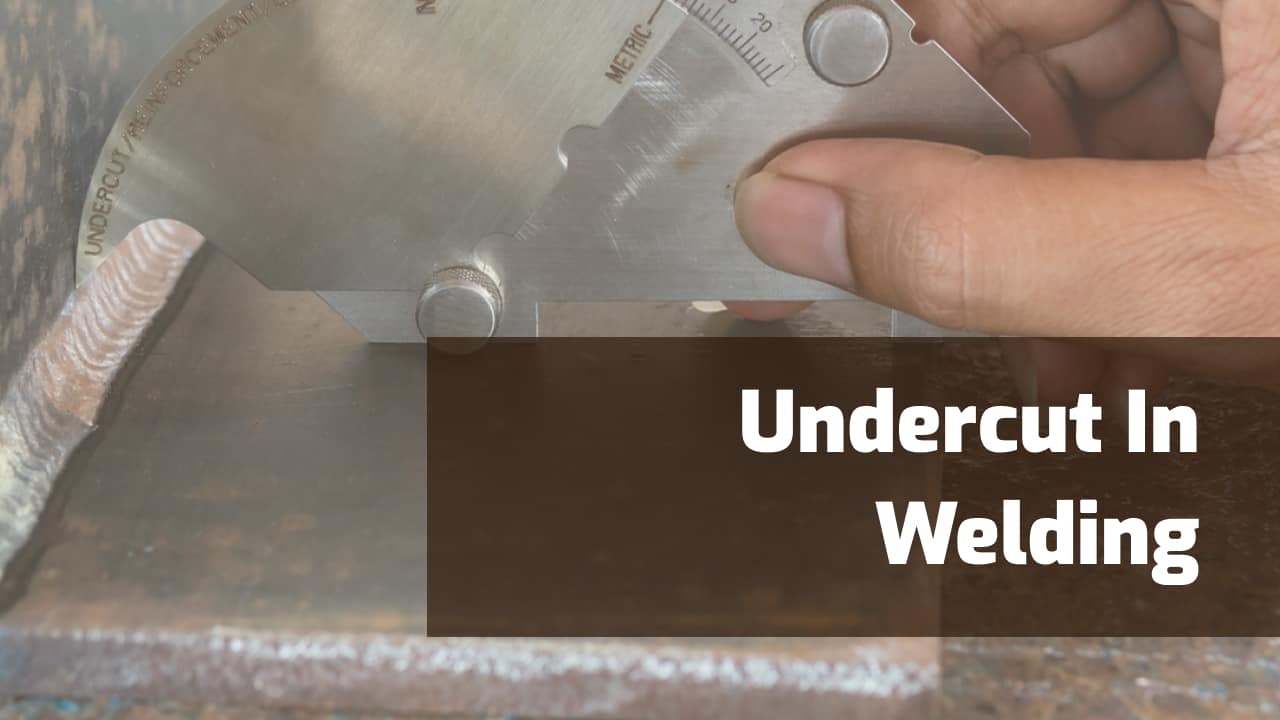Ultimate Overview to Preventing Weld Undercut: Tips and Techniques
Ultimate Overview to Preventing Weld Undercut: Tips and Techniques
Blog Article
Understanding the Art of Welding: How to Avoid Undercut Welding Issues for Flawless Construction Results
Performance and accuracy are extremely important worldwide of welding, where even the smallest flaw can jeopardize the structural stability of a produced item. One typical difficulty that welders face is damaging, a flaw that can damage a weld joint and lead to pricey rework. By recognizing the source of undercut welding and applying reliable strategies to avoid it, welders can raise their craft to brand-new levels of excellence (Preventing weld undercut). In the pursuit of remarkable manufacture outcomes, grasping the art of welding to prevent undercut issues is not just an ability however a requirement for those pursuing perfection in their job.
Comprehending Undercut Welding

To stop undercut welding, welders need to make sure proper welding parameters, such as changing the present, voltage, travel speed, and keeping the correct electrode angle. By understanding the causes of undercut welding and implementing preventive steps, welders can accomplish premium, structurally audio welds.
Root Causes Of Undercut in Welding
Understanding the elements that add to damage in welding is vital for welders to generate top quality, structurally audio welds. Poor welding inaccurate or existing welding speed can also add to damage. Understanding these causes and executing correct welding strategies can help avoid undercutting problems, making certain resilient and strong welds.
Methods to avoid Undercutting

To mitigate the risk of damaging in welding, welders can utilize tactical welding techniques intended at improving the high quality and integrity of the weld joints. In addition, utilizing the appropriate welding technique for the details joint setup, such as weave or stringer beads, can add to decreasing undercutting.
In addition, appropriate joint preparation, consisting of guaranteeing tidy base materials without impurities and utilizing the appropriate welding consumables, is vital in avoiding undercut defects. Utilizing back-step welding techniques and regulating the weld bead account can also assist disperse heat equally and reduce the threat of undercut. Regular examination of the weld joint during and after welding, in addition to implementing high quality guarantee steps, can help in dealing with and finding undercutting problems immediately. By implementing these methods faithfully, welders can achieve perfect fabrication results with minimal undercut flaws.
Value of Correct Welding Criteria
Picking and keeping proper welding specifications is crucial for attaining effective welds with very little flaws. Welding specifications refer to variables such as voltage, current, travel rate, electrode angle, and securing gas circulation rate that directly influence the welding procedure. These informative post specifications need to be very carefully changed based on the type of product being welded, its thickness, and the welding technique used.
Appropriate welding parameters ensure the correct amount of warm is applied to thaw the base metals and filler material evenly. If the specifications are set too expensive, it can cause extreme heat input, triggering spatter, burn-through, or distortion. On the various other hand, if the specifications are also low, insufficient combination, absence of infiltration, or damaging might happen.
Top Quality Guarantee in Welding Procedures

Final Thought
In final thought, mastering the art of welding requires a comprehensive understanding of undercut welding, its causes, and techniques to avoid it. By making certain correct welding specifications and executing quality control techniques, perfect construction outcomes can be attained. It is necessary for welders to constantly strive for quality in their welding procedures to avoid undercut issues and generate premium welds.
Undercut welding, a common issue in welding procedures, occurs when the weld steel doesn't properly fill up the groove and leaves a groove or depression along the bonded joint.To stop undercut welding, welders should make certain appropriate welding criteria, such as changing the current, voltage, traveling rate, and preserving the correct electrode angle. Insufficient welding current or inaccurate welding rate can likewise add to undercut.To alleviate the risk of damaging in welding, welders can use calculated welding techniques intended at improving the top quality and stability of the weld joints.In conclusion, grasping the art of welding calls for a comprehensive understanding of undercut welding, its causes, and techniques to prevent it.
Report this page